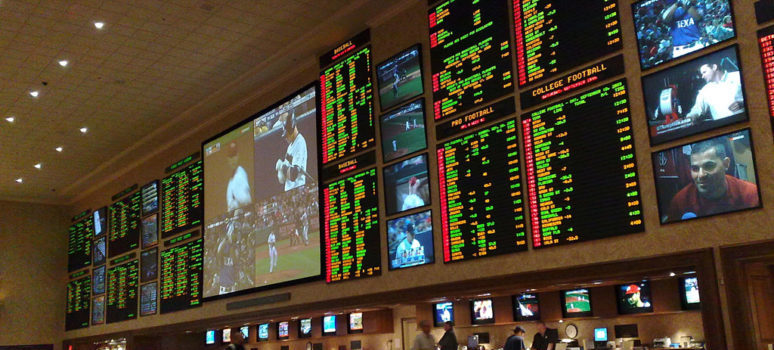What Does 100 Mean Betting
The lower number also means a lower payout, which is always the case for betting the favorite on the moneyline. A $100 bet on Arsenal +150 would net $250, while a $100 bet on Everton +190 would net $290. Going further, a $100 bet on the draw at +220 would payout $320. Read More Sports Betting Q&As.
- Now, what does the -200 mean? This means that you would have to bet $200 on the Packers in order to win $100 back. Anytime you see odds with a minus in front of it, take the number and that is what you would need to bet in order to win $100 in profit. So, a -450 number would mean that you would have to bet $450 in order to win $100 in profit back.
- What Does -110 Mean in Sports Betting? The minus and plus signs are really important to pay attention to. Along with the number, they tell you tons of information about the bet and the match. Keep reading for more detailed explanations of what the plus and minus signs mean and how to read them.
In the world of sports betting, a money line bet is simply betting on which team you expect to win. It doesn’t have anything to do with a spread. You may also see a money line bet listed as “Money Line” or “ML” in different spaces.

Money lines are represented in negative and positive values.
Negative money line: -145, -220, or anything similar
When you see a minus (-) sign in front of a price, it shows you that team is the favorite to win the game.
That number also indicates how much money you need to bet/spend in order to win $100.
For example, a -220 money line means you need to bet $220 in order to win $100 provided the team you bet on actually does win.
Heavy favorites are known in sports betting as a “chalk” pick. A heavy favorite usually has a number pushing +300 or more. Here, you’re wagering a lot on the favorite to win a little. Don’t assume that a heavy favorite, or chalk pick, is a guaranteed winner…
Positive money line: +145, +220, or anything similar
What Does 1/100 Mean In Betting
When you see a plus (+) sign in front of a price, it shows you that team is the underdog. Higher numbers like +400, +500, +5000, etc. represent how much of an underdog the team is in the game. The higher the number the more likely the team is expected to lose in the eyes of the oddsmakers.
The number also indicates how much money would win in comparison to every $100 you wager.
What Does +100 Mean When Betting

For example, a +150 money line means you would win $150 for each $100 wager you place should that team win the game.

Money line examples:
Lets use an NFL example here:

New England Patriots -240
Miami Dolphins +220
To bet the New England Patriots to win on the money line, you would need to spend $240 on the bet for a chance to win $100 if the Patriots beat the Dolphins. Your return would be $340 – the original $240 stake (bet) and the $100 bet profit.
To bet the Miami Dolphins to win on the money line, you would spend $100 on the bet for a chance to win $220 if the Dolphins, as the underdog, beat the Patriots. Your return would be $320 – the original $100 stake (bet) and the $220 profit.
In both situations, it doesn’t matter if the team you bet on wins by one point or 100 points. You’re purely betting on the team you believe will win the game. As Al Davis said, “Just win, baby.” That’s exactly what you’d be looking for out of your selection. It doesn’t have to be pretty, it just has to happen or your original stake is lost.
The plus (+) and minus (-) in sports betting can refer to either the point spread or betting odds. In terms of the spread, the ' - ' always refers to the favorite and the ' + ' always refers to the underdog. For example, you can bet the Dallas Cowboys as a -7 point favorite to beat the Green Bay Packers or the Packers as a +7 point underdog. If you bet the Cowboys -7 and they win by more than seven points, you win your bet. Similarly, if you bet the Packers +7, as long as they lose by less than seven points or win outright, you win your bet.
It's a similar case for the betting odds, though favorites don't always have a ' - ,' especially in sports like baseball, hockey or soccer where final results are often decided by one run or one goal. It's especially the case in soccer since matches can end in draws, whereas a winner is declared in almost every other sport because of overtime rules. However, in most cases, the favorite will have a ' - ' in front of its moneyline odds while the underdog will always have a '+ .'
For an example of moneyline betting odds, you can bet the Eagles as a -150 favorite to win or the Giants as a +180 underdog to win. If you bet $100 on the Eagles to win at -150, you would net a payout of $166.70. If you bet on the Giants to win at +180, the payout would be $280 because they are an underdog.
For something like soccer, Arsenal could be a +150 favorite against Everton as a +190 underdog, while the draw would be set at +220. In this case, the payout would be decent for every situation mainly because the teams are even and there are three possible results compared to just two for something like football (unless they go scoreless in overtime). In this case where both teams have a ' + ' in front of their odds, the team with the lower number is the favorite. The lower number also means a lower payout, which is always the case for betting the favorite on the moneyline. A $100 bet on Arsenal +150 would net $250, while a $100 bet on Everton +190 would net $290. Going further, a $100 bet on the draw at +220 would payout $320.